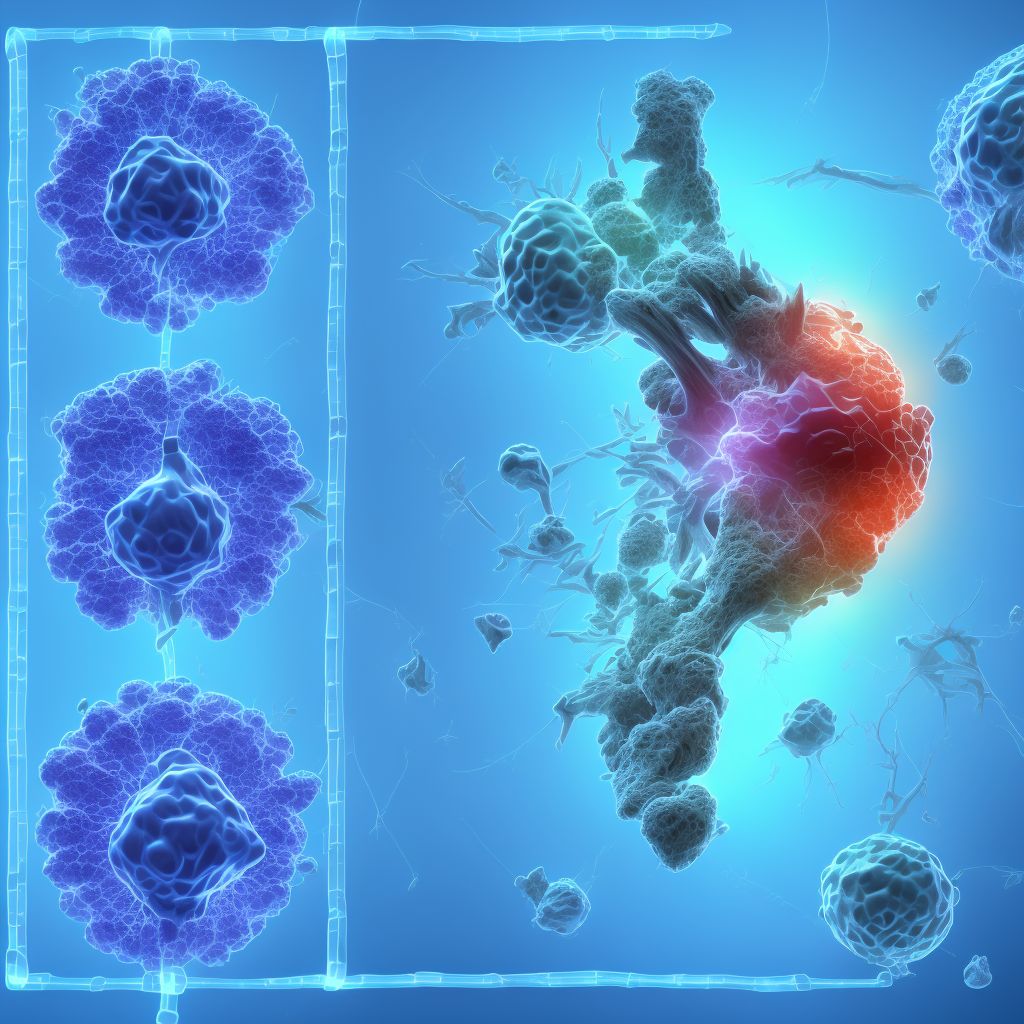
Nondisplaced fracture of medial condyle of left tibia, subsequent encounter for open fracture type IIIA, IIIB, or IIIC with malunion Save
ICD-10 code: S82.135R
Disease category: S82.135: Nondisplaced fracture of medial condyle of left tibia
Nondisplaced Fracture of Medial Condyle of Left Tibia: Understanding Open Fracture Types IIIA, IIIB, or IIIC with Malunion
When it comes to lower limb injuries, fractures can be quite common. One specific type of fracture that can occur is a nondisplaced fracture of the medial condyle of the left tibia. This injury can be further complicated if it progresses to an open fracture type IIIA, IIIB, or IIIC with malunion.
An open fracture refers to a condition where the fractured bone breaks through the skin, significantly increasing the risk of infection and further complications. Open fractures are categorized into three types depending on the severity of soft tissue damage and the degree of contamination. These types are IIIA, IIIB, and IIIC.
- Type IIIA: This type involves adequate soft tissue coverage despite significant contamination or extensive loss of tissue. The fracture is stabilized using internal fixation methods, such as plates, screws, or rods.
- Type IIIB: Type IIIB fractures have significant soft tissue loss, making it challenging to provide adequate coverage. These fractures often require more complex treatments, like free tissue transfer or muscle flaps.
- Type IIIC: This type involves arterial injury, requiring immediate vascular repair. These fractures are extremely severe and require specialized surgical interventions to restore blood flow and stabilize the fracture.
Malunion is a term used to describe the improper healing of a fracture that results in a misaligned or deformed bone. This can occur when the fracture is not adequately immobilized or if the bone is not aligned correctly during the healing process. Malunion can lead to functional impairments and may require further intervention, such as corrective surgery.
Understanding the different types of fractures and their potential complications is crucial for healthcare professionals to provide appropriate care. Proper diagnosis and treatment planning can help minimize the risk of complications and improve patient outcomes.
It is important to note that this article aims to provide general information and should not be considered a substitute for professional medical advice. If you suspect a nondisplaced fracture of the medial condyle of the left tibia or any related condition, it is essential to consult with a qualified healthcare professional for an accurate diagnosis and appropriate treatment.
Treatment of Nondisplaced fracture of medial condyle of left tibia, subsequent encounter for open fracture type IIIA, IIIB, or IIIC with malunion:
Treatment Options for Nondisplaced Fracture of Medial Condyle of Left Tibia
A nondisplaced fracture of the medial condyle of the left tibia, subsequent encounter for open fracture type IIIA, IIIB, or IIIC with malunion is a complex injury that requires proper treatment for optimal recovery. Here are some treatment options that can help in managing this condition: